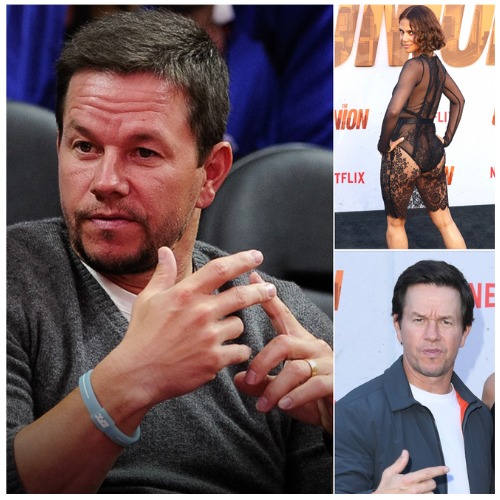Have you ever opened a bag of chips, expecting only crispy, flavorful bites, but instead, you found a mysterious blue disc hidden among them? If so, you’re not alone. Many people have stumbled upon this puzzling object, often embossed with text such as “Ferrous 25mm BST, Cert No. 213026B.” But what does it mean? And more importantly, how did it end up in your snack?
What Is the Blue Disc Found in a Packet of Chips?

At first glance, you might think it’s a promotional token, a production defect, or even an unexpected prize. However, this small blue disc is actually a metal detector test chip used in food processing plants.
This test chip is designed to ensure that food safety equipment—specifically, metal detectors—are working correctly. These chips are strategically placed on the production line to verify whether the detectors can identify and remove potential foreign objects. The blue color helps it stand out from the food, making it easier to spot if something goes wrong.
Why Are Metal Detector Test Chips Used in Food Manufacturing?
Food safety is a top priority for manufacturers. The presence of any foreign object, whether metal, plastic, or glass, poses a significant risk to consumers. To prevent contamination, most factories use metal detectors to scan food items before they are packaged and shipped.
Here’s how the process works:
- Test chips—like the one you found—are deliberately inserted into the production line at set intervals.
- Metal detectors scan the products, ensuring they catch the test chips.
- If the machine detects the chip, it triggers an alert and removes the contaminated item.
- If the chip is NOT detected, it signals a potential failure in the system, and production is halted until the issue is resolved.
Why Did the Test Chip End Up in My Chips?
Now, here’s where things get concerning. The very reason test chips exist is to prevent foreign objects from getting through. So if you found one in your bag of chips, it means something seriously went wrong in the quality control process.
There are a few possible explanations:
- The chip was misplaced and never retrieved – This suggests a human error where someone forgot to remove the test chip after conducting quality control.
- The metal detector failed – This is the most alarming possibility. If the detector failed to catch the test chip, it may have also missed other harmful objects, such as metal fragments or contaminants.
- Production oversight – Sometimes, manufacturing processes get rushed, and crucial safety checks are overlooked.
Regardless of the reason, this is a major red flag that warrants immediate action.
What Should You Do If You Find a Metal Detector Test Chip in Your Food?
If you ever find a test chip inside a food product, take the following steps:
- Do NOT consume any more of the product – There could be other contaminants present that went undetected.
- Keep the packaging and the chip – This will be crucial when reporting the issue.
- Contact the manufacturer immediately – Most brands have customer service lines or emails where you can report quality concerns.
- Request an explanation and possible recall information – If a test chip made it into your food, there’s a chance others might have had the same experience.
- Consider reporting the issue to a food safety authority – Agencies like the FDA (in the U.S.) or the FSA (in the UK) monitor food safety standards and may investigate further.
Will the Manufacturer Face Consequences?
Yes! Food safety protocols require companies to document every test chip used in their quality control process. When a test chip goes missing, production should stop immediately until it is found.
If you report the incident, the company will likely conduct an internal investigation to determine how this breach occurred. In some cases, it may even lead to:

- Product recalls – If multiple reports emerge, the company may be forced to recall entire batches of the affected product.
- Fines and penalties – Regulatory agencies may impose fines if they determine that safety protocols were neglected.
- Operational reviews – Manufacturers might overhaul their processes to prevent similar failures in the future.
Could There Be Other Foreign Objects in My Chips?
The unfortunate reality is that if a test chip made it through, other foreign objects could have as well. While food safety measures exist to minimize risks, errors do happen. There have been cases of consumers finding:
- Plastic or rubber fragments from conveyor belts
- Metal shavings from broken machinery
- Glass pieces from shattered equipment
- Insects or other biological contaminants
This is why quality control is so critical. The presence of a metal detector test chip in your chips raises serious questions about the reliability of the manufacturer’s safety measures.
Final Thoughts: Should You Be Concerned?
Absolutely. While finding a blue test chip in your chips might seem like a bizarre fluke, it’s actually a major food safety failure. These chips are meant to stay on the production line, not end up in your snack bag.
If this happens to you, take action. Report it, demand accountability, and spread awareness. Food safety should never be compromised, and manufacturers must be held to the highest standards to ensure that what we eat is truly safe.
HALLE BERRY’S LINGERIE DRESS SPARKS OUTRAGE – FANS CALL IT ‘LOW CLASS

Two days before her 58th birthday, Halle Berry showed up at the opening of The Union in a very daring sheer dress. Her co-star, Mark Wahlberg, praised her look, saying only she could pull off such a bold outfit.
However, not everyone was impressed. Some critics online called her “low class” for hugging a married man while wearing such revealing clothing.
Halle Berry and Mark Wahlberg star together in *The Union*, a comedy thriller that came out on Netflix on August 16. Wahlberg, 53, plays a construction worker named Mike, who gets involved in a world of espionage thanks to his high school sweetheart, played by Berry.
Halle Berry, 58, was thrilled to finally work with her long-time friend Mark Wahlberg. She told The Hollywood Reporter, “When this happened, I thought, ‘Wow, this is the thing I didn’t know that I needed.’ I’ve known Mark for about 30 years, and working with him was like going home.”
Mark Wahlberg also spoke highly of Berry to Entertainment Tonight. He said, “I’ve always been a big fan of hers. Working with Halle is easy and a joy. Any guy or gal would want to impress her, so it was easy for me to follow her around like a puppy.”
Halle Berry and Mark Wahlberg star together in *The Union*, a comedy thriller that came out on Netflix on August 16. Wahlberg, 53, plays a construction worker named Mike, who gets involved in a world of espionage thanks to his high school sweetheart, played by Berry.
Halle Berry, 58, was thrilled to finally work with her long-time friend Mark Wahlberg. She told The Hollywood Reporter, “When this happened, I thought, ‘Wow, this is the thing I didn’t know that I needed.’ I’ve known Mark for about 30 years, and working with him was like going home.”
Mark Wahlberg also spoke highly of Berry to Entertainment Tonight. He said, “I’ve always been a big fan of hers. Working with Halle is easy and a joy. Any guy or gal would want to impress her, so it was easy for me to follow her around like a puppy.”
Wahlberg praised Berry’s physical fitness and her role as a covert operative in the film, saying she is in “incredible shape.”
At the film’s opening on August 12, Berry walked the red carpet in a stunning long-sleeve black sheer dress with lace details, showcasing Wahlberg’s comments about her impressive physique.
When asked why she wore a lingerie-style dress to the premiere, Halle Berry confidently replied, “Because I can, goddamn.” Her co-star, Mark Wahlberg, agreed, saying, “Nobody else can pull that off but Halle Berry.”
Berry also attended the premiere with her 16-year-old daughter Nahla, who was thrilled to meet Wahlberg. Berry shared with People, “I got cool points when I introduced my daughter to Mark because she loves *Daddy’s Home*. It was the first time in my career that she said, ‘Oh, you know Mark Wahlberg? Okay, you’re cool.’”
Critics and fans had mixed reactions to Halle Berry’s outfit at the premiere. Some were critical of her choice, saying, “Low class hugging him dressed like that and he’s married.” Others felt the dress was too busy with lace but admired her overall appearance, with comments like, “She looks amazing, but I’m not feeling the style of her dress. I hope I look like this at 57, though. Unreal.”
Despite the criticism, many fans praised Berry’s look. “If I had her body at her age, I would dress the same,” one fan said, while another added, “She looks amazing. What is wrong with people?”
Halle Berry turned 58 recently, and many are celebrating her timeless beauty. What do you think about her dress and the reactions it’s received? Share your thoughts and help spread the birthday wishes for Halle Berry!



Leave a Reply